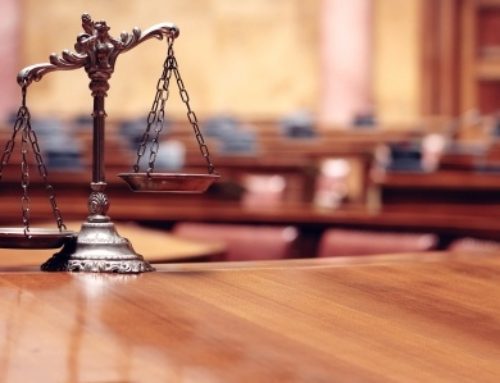Editor’s Note: In this article, the author critically reviews the lack of checks to prevent arbitrary exercise of CJI’s power to act as the master of the roster. He draws attention to the sui generis character of judicial administration, and why it is an important ingredient for independence of the judiciary from both external and internal politics. He then offers a solution in the form of having a clearly articulated rules-based framework to govern roster-allocation in courts.
The idea of Rule of Law resounds in epitaph of the Supreme Court of India: ‘Yato dharmas tato jayah’; whence law, thence victory. However, the recent unfolding in the national capital begs introspection into the state of affairs in the working of the apex court itself. The historical press conference led by Justice Chelameswar is not a eulogy of democratic ethos, it is the frustration of the attempts to resolve matters internally.
The Indian legal praxis comes from the British traditions which itself is significantly influenced by the Roman ideas on law and governance, perfected from an antecedent Hellenistic tradition. The Latin doctrine of ‘Primus inter pares’ or ‘first among equals’ is a rule whereby a unitary member acts as an overseer among a collegiate of similarly gathered. The Anglo-Saxon ‘bretwalda’ is a historical tradition of an overlord who gains nominal powers to supervise the otherwise equal and concurrently ruling monarchs. In contemporary legal structures, both the Government and the Judicial courts have their own ‘bretwalda’ when they refer to a ‘Prime’ minister and a ‘Chief’ Justice. Article 74 of the Constitution defines the Council of Ministers and the Prime Minister, whereof Articles 75 and 78 only grant nominal powers to the latter in terms of acting as a communicative channel and as a convener of the former. Similarly, Article 124 defines the office of a Chief Justice of India vis-à-vis the other judges, whilst other provisions grant administrative powers over the Supreme Court. The collegiate of the Court, unlike the Council, is entrusted with the duty to isolate itself from visibly political antics. As a forum for justice, the collegiate must not only inoculate itself from external politics, but also from internal. And it is this inability to internally placate the political turmoil which has led to the off-standing witnessed on the 12th January, 2018.
The CJI has been accused of breaching the established conventions that have been used to limit the ‘over-lordship’ in a judicial collegiate. First, that the power to constitute judicial benches must be exercised tenably. Unlike the American Supreme Court, the Indian Supreme Court does not function ‘en banc’, all together. Various benches are constituted to take up different matters with the aim of distributing the workload to maximize effectiveness. Second, that the power of the Chief Justice to set the roster must not be exercised arbitrarily. The Chief Justice should assign matters to appropriate benches to ensure that the subject matter expertise of the judges can best be utilized to reach just outcomes. Both of these principles have been developed to exclude claims of politicization of justice by assigning cases to specific benches with the intent of reaching predetermine results.
The four collegium judges have expressed anguish over their inability to ensure that the CJI follows these conventions. As alleged by Senior Advocate Mr. Dushyant Dave in his opinion piece, the allocation of various sensitive matters right from the Triple Talaq case, the Aadhar-Privacy matter, Justice Karnan’s contempt motion, and the matter over the appointment of CBI’s Additional Director have been done to exclude a section of judges with an intent to further certain political ends. Although the controversy was simmering for about a year, the boil seems to have come from the assignment of the Judge Loya’s case to a predetermined bench on Friday. While the TV news debates harbor suspicion over strategic gains to political parties, the graver question is of institutional solidarity. Three politico-legal issues need to be resolved at the earliest for resolving the issue at hand.
The Order dated 10.11.2017 in the matter of Campaign for Judicial Accountability and Reforms v. Union of India seems to be a legal vindication of the CJI’s seemingly political actions in setting the roster. The five-judge bench headed by the Chief Justice stated that:
“…the Chief Justice is the master of the roster and he alone has the prerogative to constitute the Benches of the Court and allocate cases to the Benches so constituted.”
However, such a ‘prerogative’ like any other discretionary power, cannot be exercised arbitrarily. The Rule of Law is a tenuous concept if not buttressed by fundamental precepts of minimum procedural fairness. Professor Lon L. Fuller in his authoritative book The Morality of Law argues that rules and regulations should be inter alia publicly promulgated, sufficiently intelligible, constant, and administered as per their apparent meaning to ensure that fairness is maintained.
Which brings us to the next point, that in order to limit the CJI’s ‘prerogative,’ some clear rules must be brought forward. In the letter addressed to the CJI, the four collegium judges requested for the finalisation of the Memorandum of Procedure in reference to the Order dated 27.10.2017 in R. B. Luthra v. Union of India. While the process to finalise the Memorandum has seemingly been kept in a state of suspended animation with the government’s Ministry of Law and Justice since March 2017, it was urged to expedite the process of finalising the same so as to limit discretion in judicial administration. However, the Memorandum deals with the functioning of the Collegium in matters of judicial appointments and does not extend to limiting the discretion of the CJI in acting as “the master of the roster”. Therefore, there is an urgent need to bring forward a rule-based framework on similar lines to govern CJI’s power to set the roster for different benches within the Supreme Court.
Lastly, the concerns raised publicly by the four top-most puisne judges only goes on to strengthen allegations of a ‘committed’ judiciary and evermore ‘fixed’ judges. Public faith in the judicial institution rests in the collective strength of the court. Every judge should be fair and impartial and thereof the institution will be just. If indeed the selective allocation of roster can lead to predetermined results, then the apparent conclusion is that certain judges lean left while others lean right (no pun intended). This is most certainly problematic, especially at a time when the judiciary fights the executive (for instance see, Supreme Court Advocates on Record v. Union of India) to protect itself from being ‘politicised’ by external intervention.
The CJI must reflect on what Justice Ruth B. Ginsburg of the US Supreme Court aptly states:
“A judge sworn to decide impartially can offer no forecasts, no hints, for that would show not only disregard for the specifics of the particular case, it would display disdain for the entire judicial process.”
Shreenath Khemka is a King’s College Law Scholar pursuing L.L.M. at Cambridge University. The article was internally copy-edited by Siddharth Aiyanna and Abhijeet Rawaley.







Leave A Comment